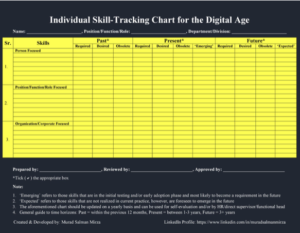Do You Want to Remain Professionally Relevant in the Digital World?
By Murad Salman Mirza
There was a time when graduating from a reputable academic institution led to a warm welcome on a safe professional journey, beginning with a steady climb up the corporate ladder and ending in a respectable retirement from a grateful organization.
However, business life cycles have become increasingly susceptible to ‘disruptive’ technologies and seemingly secure careers are wavering under the ‘relevancy’ scrutiny. Gaining a degree is no longer considered essential for success in an era where ‘abandonment’ has become fashionable due to the achievements of ‘dropouts’ who continue to receive ‘rock star’ status in the startup world.
This is being reinforced by the huge influx of MOOCs (Massive Open Online Courses) with their core emphasis on specific skills, rather than, broad educational credentials.
Adjusting to Dynamic, Digital Demands
The key for astute professionals is a positive mindset with its ability to envision novel ways of adjusting to the dynamic demands of the digital world. However, failing to engage in an honest self-assessment of professional prowess while successfully addressing the ‘narrow’ compulsions of working in a particular organization can delimit this adjustment.
In this context, the following individual skill-tracking chart is being presented as a proactive tool to ensure that ‘irrelevancy’ never becomes a recurring nightmare for professionals seeking congruence to the new corporate norms.

The aforementioned chart provides a lucid perspective of learning and development imperatives within a temporal context and provides a panoramic view of the needs and expectations aligned with the career aspirations of a sagacious professional. Following are some of the main exploratory questions that can be used in formulating the respective chart:
- What are the comprehensive skills required for this person to do the assigned position/role in an efficient and effective manner?
- What were the past skill requirements and expectations for this position/role and are they still relevant?
- What are the current skill requirements and expectations for this position/role and will they stay relevant in the future?
- Are there any emerging skills that have the capacity to become a requirement in the future?
- What will be the future skill requirements and expectations for this position/role and do they differ from the past and present requirements?
- Are there any skills that were ‘required’ in the past moved to the ‘desired’ status in the present?
- Are there any skills that are ‘required’ now used to be ‘desired’ in the past?
- Are there any ‘desired’ skills now that can become a ‘requirement’ in the future?
- Have any skills that were considered obsolete earlier become relevant again?
- Are there any skills that are considered obsolete now liable to be relevant again in the future?
- Are there any skills that remain consistently in demand across the temporal divide?
- Do the skill sets facilitate the conduct of a comprehensive and effective performance appraisal?
- Has the percentage of skills that can be reinforced/enhanced using blended learning increased across the temporal divide?
- Has the percentage of obsolete skills increased across the temporal divide?
- Has the percentage of required skills increased across the temporal divide?
- Has the percentage of desired skills increased across the temporal divide?
- Is the nature of this position/role going to change in the future?
- Will this position/role exist in the future?
- Will this position/role gain more significance that its current level in the future?
- Will this position/role lose its current level of significance in the future?
- Does this position/role overlap significantly with another position/role in terms of skill sets?
- Can this position/role be easily merged with another position/role?
- Can the talent pipeline for succession planning initiatives be reinforced with the skill sets reflected in the respective chart?
- Which is the most relatable/closest position/role that can accommodate a person doing this position/role if it is eliminated due to certain inevitable situations, e.g., rightsizing, technological obsolescence, merger & acquisition, etc.
- Can the respective chart be used in a benchmarking study with closely matching/similar positions/roles of competitors/industry leaders/trendsetters?
The aforementioned questions enable the skill-tracking chart user to prepare a fertile ground, sow an optimal mix of germinal skills and reap a productive harvest for prolonging his/her ‘usefulness’ as a ‘qualified’, ‘committed’ and ‘needed’ professional in the discerning purview of key decision-makers. It’s time we resolutely challenge the customarily used adage of ‘everyone is expendable’…
Murad Salman Mirza is an innovative thinker and an astute practitioner of areas within and associated with the fields of organizational development, talent management and business transformation. He has lived, studied and served in different regions of the world, including the US, Australia, South Asia and the Middle East. Murad has more than 15 years of multi-disciplinary experience and has rich exposure to multiple sectors within the corporate world. Currently, he is engaged as a Board Member with two US-based organizations. His LinkedIn profile can be viewed at: Murad Salman Mirza.







